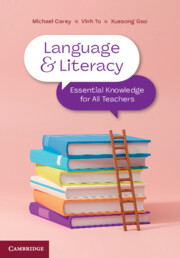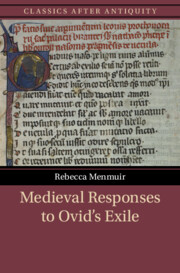Refine search
Actions for selected content:
254 results
2 - Colonial Space and Fluvial Patterns
-
- Book:
- The Making of Brazilian Amazonian Societies
- Published online:
- 14 November 2025
- Print publication:
- 20 November 2025, pp 67-102
-
- Chapter
- Export citation
10 - Code-Switching and Language Mixing
- from Part II - Contact and External Influences
-
-
- Book:
- The New Cambridge History of the English Language
- Published online:
- 30 October 2025
- Print publication:
- 30 October 2025, pp 275-299
-
- Chapter
- Export citation
14 - Adverbs in the History of English
- from Part II - Tracking Change in the History of English
-
-
- Book:
- The New Cambridge History of the English Language
- Published online:
- 23 October 2025
- Print publication:
- 23 October 2025, pp 391-422
-
- Chapter
- Export citation
The paradox of stress in English: Is it vital or unimportant?
-
- Journal:
- English Today , First View
- Published online by Cambridge University Press:
- 07 October 2025, pp. 1-7
-
- Article
- Export citation
An empirical study of vowel reduction and preservation in British English
-
- Article
-
- You have access
- Open access
- HTML
- Export citation
Grammatical development of the native L1 in Cantonese–English bilingual children: early costs and long-term gains
-
- Journal:
- Bilingualism: Language and Cognition , First View
- Published online by Cambridge University Press:
- 26 August 2025, pp. 1-14
-
- Article
-
- You have access
- Open access
- HTML
- Export citation
7 - Language Ideologies of Prestige
- from Part II - Constructing Languages through Discourses on Belonging, Prestige, and Materiality
-
- Book:
- Liquid Languages
- Published online:
- 28 July 2025
- Print publication:
- 14 August 2025, pp 126-159
-
- Chapter
- Export citation
6 - Language Ideologies of Belonging
- from Part II - Constructing Languages through Discourses on Belonging, Prestige, and Materiality
-
- Book:
- Liquid Languages
- Published online:
- 28 July 2025
- Print publication:
- 14 August 2025, pp 93-125
-
- Chapter
- Export citation
Native Chinese readers activate English translations of words during Chinese sentence reading
-
- Journal:
- Bilingualism: Language and Cognition , First View
- Published online by Cambridge University Press:
- 06 August 2025, pp. 1-12
-
- Article
-
- You have access
- Open access
- HTML
- Export citation
A register approach to modal (non-)concord in English: an experimental study of linguistic and social meaning
-
- Journal:
- English Language & Linguistics / Volume 29 / Issue 3 / September 2025
- Published online by Cambridge University Press:
- 24 July 2025, pp. 478-504
-
- Article
-
- You have access
- Open access
- HTML
- Export citation
Bridging the Gap: Bilingualism and the End of the Two Solitudes
-
- Journal:
- Canadian Journal of Political Science/Revue canadienne de science politique , First View
- Published online by Cambridge University Press:
- 22 July 2025, pp. 1-21
-
- Article
-
- You have access
- Open access
- HTML
- Export citation
Chapter 5 - John Gower’s Visio Anglie
- from Part II - Becoming the Exile
-
- Book:
- Medieval Responses to Ovid's Exile
- Published online:
- 27 May 2025
- Print publication:
- 12 June 2025, pp 148-176
-
- Chapter
- Export citation
Introduction
-
- Book:
- Language and Literacy
- Published online:
- 29 May 2025
- Print publication:
- 12 June 2025, pp 1-6
-
- Chapter
- Export citation
Chapter 6 - Geoffrey Chaucer’s Exilic Voice
- from Part II - Becoming the Exile
-
- Book:
- Medieval Responses to Ovid's Exile
- Published online:
- 27 May 2025
- Print publication:
- 12 June 2025, pp 177-209
-
- Chapter
- Export citation
Chapter 6 - English language diversity and change
- from Part 1 - Language and literacy fundamentals
-
-
- Book:
- Language and Literacy
- Published online:
- 29 May 2025
- Print publication:
- 12 June 2025, pp 134-152
-
- Chapter
- Export citation
The rise of Scots do – transfer or innovation?
-
- Journal:
- English Language & Linguistics , First View
- Published online by Cambridge University Press:
- 05 June 2025, pp. 1-31
-
- Article
-
- You have access
- Open access
- HTML
- Export citation

Language and Literacy
- Essential Knowledge for All Teachers
-
- Published online:
- 29 May 2025
- Print publication:
- 12 June 2025
-
- Textbook
- Export citation

Medieval Responses to Ovid's Exile
-
- Published online:
- 27 May 2025
- Print publication:
- 12 June 2025
Active participles are (deverbal) adjectives
-
- Journal:
- Journal of Linguistics , First View
- Published online by Cambridge University Press:
- 08 May 2025, pp. 1-34
-
- Article
-
- You have access
- Open access
- HTML
- Export citation
12 - Charismatic Speech Breathing
- from IV - Persuasion and Algorithms
-
-
- Book:
- Manipulation, Influence and Deception
- Published online:
- 10 June 2025
- Print publication:
- 24 April 2025, pp 250-276
-
- Chapter
- Export citation
